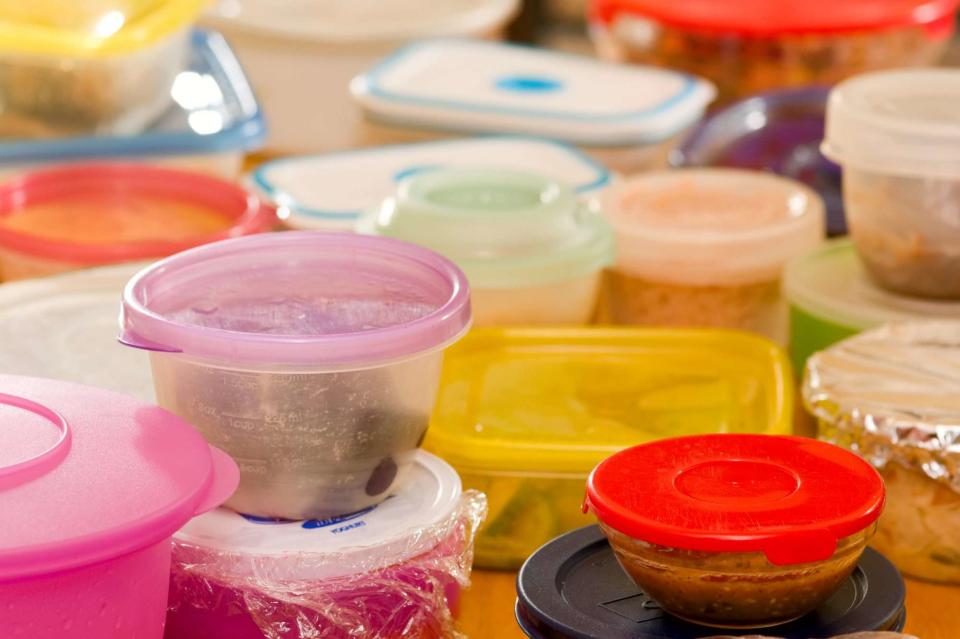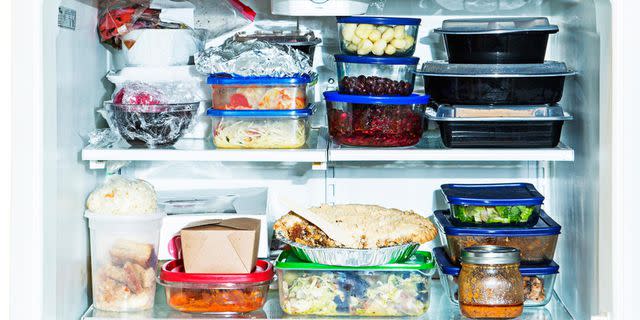Is It Safe to Put Hot Food in the Fridge?
Or should you let foods cool before refrigerating them?

There are two kinds of people: those who like to pack up leftovers as soon as dinner is over, and those who let leftovers sit out for a few hours so they can cool down.
If this dynamic exists in your household, then you're all too familiar with the anxiety it causes. The longer food sits out, the higher its risk of growing harmful bacteria. However, placing hot foods straight into the refrigerator might raise the appliance's ambient temperature, putting the foods inside directly in the "danger zone" for bacterial growth. Right?
It turns out that these fears are valid — both leaving leftovers out for an extended period of time and adding hot items to the fridge can pose problems for food safety. But there is a way to put hot foods into a cold fridge safely. Read on to learn how to properly store hot food and how to cool foods rapidly for quicker storage.
How Long Should You Let Food Cool Before Refrigerating?
Whether you should immediately stash food in the fridge or let it sit out to cool depends on its temperature. Dangerous bacterial growth occurs between 41 and 135 degrees F (5 and 57 degrees C). This spectrum is known as the danger zone for foods. Potentially harmful bacteria grow most rapidly at these temperatures.
Placing large batches of hot foods in the fridge can push the temperature of the fridge into this danger zone. (Fridge temperatures should always be set below 40 degrees F (4 degrees C).) This may prevent the rapid cooling that is needed to get food below the danger zone as fast as possible.
However, there's no harm in putting hot food directly into the fridge if you need to. If you are a forgetful person, or if you won't be around to store the food after it has cooled some, go ahead and stash it in the fridge. Your fridge can handle the heat and get the food cooled quickly. (Food should never stay out at room temperature for more than two hours. If it does, exercise food safety caution and toss the food.)
"You would be able to place a slightly cooled hot dish into the refrigerator long before you hit the two-hour mark," says Serena Poon, celebrity chef, nutritionist, and graduate of Le Cordon Bleu's Grand Diplôme training program. "Most food safety experts would say the sooner you can get your leftovers in the fridge, the better."

How to Cool Foods Quickly
A refrigerator can rapidly cool foods, even hot ones, but you can speed up the process of getting below the temperature danger zone with these tips.
Divide large batches of food. For large amounts of food, like roasts and stockpots full of soup, FoodSafety.gov recommends you divide the dishes into smaller or shallow storage containers. This will allow the food to cool down more quickly once in the fridge.
Give the food an ice bath. If you need to cool foods more rapidly before storing them in the refrigerator, you can place the smaller containers of food into an ice bath or run them under cold water.
Don't use a cooler. Never try to cool large amounts of hot food in a cooler. "Most coolers are not designed to cool large amounts of hot food quickly," says Teresa Baczkowski, RDN. "Also, placing hot food in a cooler may not move the food through the temperature danger zone quickly enough."
How Long Can Food Stay Outside the Fridge?
The general rule of thumb is that cooked food can sit at room temperature for no more than 2 hours.
Furthermore, according to the U.S. Department of Agriculture (USDA), if food is left out at a temperature that exceeds 90 degrees F (32 degrees C), it shouldn't sit out for more than an hour. Left out for too long, leftovers can become breeding grounds for dangerous bacteria, and they can make people sick.
The Bottom Line
It is OK to store hot foods in the fridge. You do not have to wait for the foods to cool before you put them away. In fact, it's better to store them right away while they're still hot than to forget them and leave them sitting at room temperature for too long.
However, if you are storing a large amount of hot food, it will help the food pass through the danger zone for bacterial growth faster if you divide it into smaller, shallow containers. An ice bath or cold water shower can help food cool more quickly too.
Related:
Read the original article on All Recipes.

